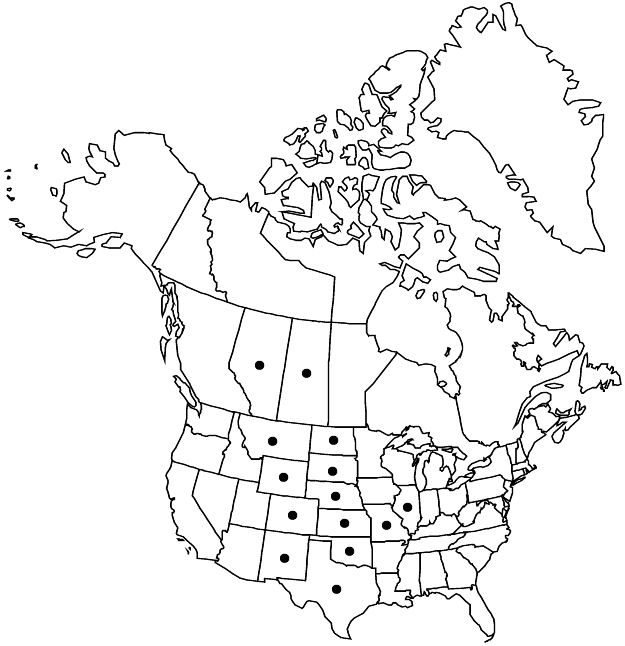Difference between revisions of "Linum compactum"
Bull. Torrey Bot. Club 31: 241. 1904.
FNA>Volume Importer |
FNA>Volume Importer |
Revision as of 18:22, 24 September 2019
Herbs, annual, 5–30 cm, glabrous throughout or puberulent at base. Stems erect, branched from base and throughout, bushy. Leaves alternate, spreading to ascending; stipular glands absent; blade linear, 10–28 × 1–1.5 mm, margins entire or sparsely toothed on distal leaves, not ciliate, apex acute. Inflorescences dense panicles. Pedicels 2–7 mm. Flowers: sepals tardily deciduous, lanceolate, 5–9 mm, margins narrowly scarious, conspicuously glandular-toothed, apex acute to acuminate; petals yellow, obovate, 6–11 mm; stamens 4–6 mm; anthers 0.4–0.8 mm; staminodia absent; styles connate nearly to apex, 2.5–4 mm; stigmas capitate. Capsules ovoid, 3.5–4.4 × 2.7–3.5 mm, apex obtuse, dehiscing into 5, 2-seeded segments, segments persistent on plant, false septa complete, proximal part membranaceous, not terminating in loose fringe, distal part cartilaginous, margins not or only minutely ciliate. Seeds 2.6–3.1 × 1–1.3 mm. 2n = 30.
Phenology: Flowering Jun–Aug(–Sep).
Habitat: Sagebrush grasslands, ponderosa pine woodlands, meadows, prairies, rocky outcrops.
Elevation: 600–1800 m.
Distribution

Alta., Sask., Colo., Ill., Kans., Mo., Mont., Nebr., N.Mex., N.Dak., Okla., S.Dak., Tex., Wyo.
Discussion
Linum compactum is generally low-growing, much branched, and bushy; its flowers are smaller than those of L. rigidum. Linum compactum is found on the high plains in open areas. C. M. Rogers (1984) suggested that it might be closely related to L. australe, which differs in being more slender with more open habit and of pine forest habitats.
Selected References
None.